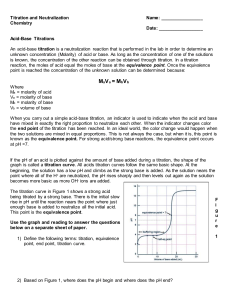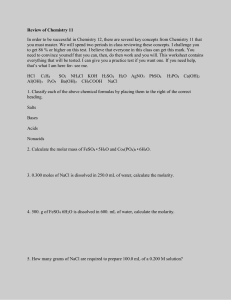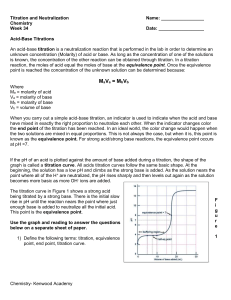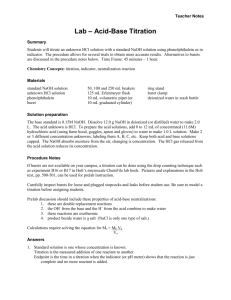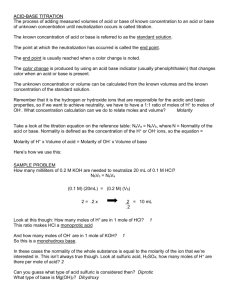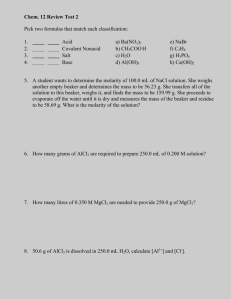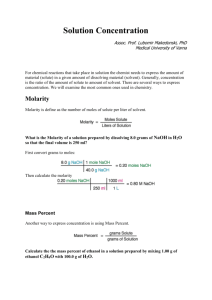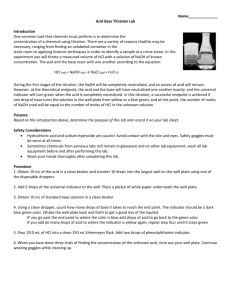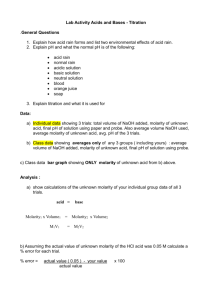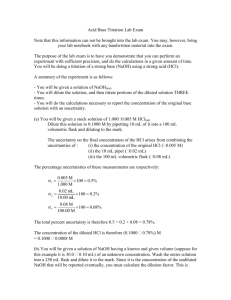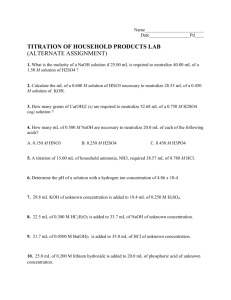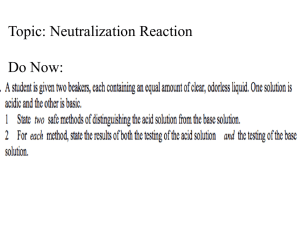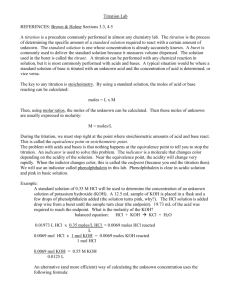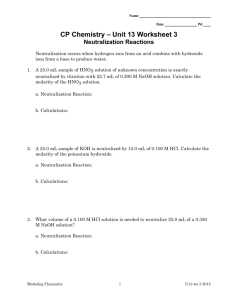Acid-Base Titration
advertisement
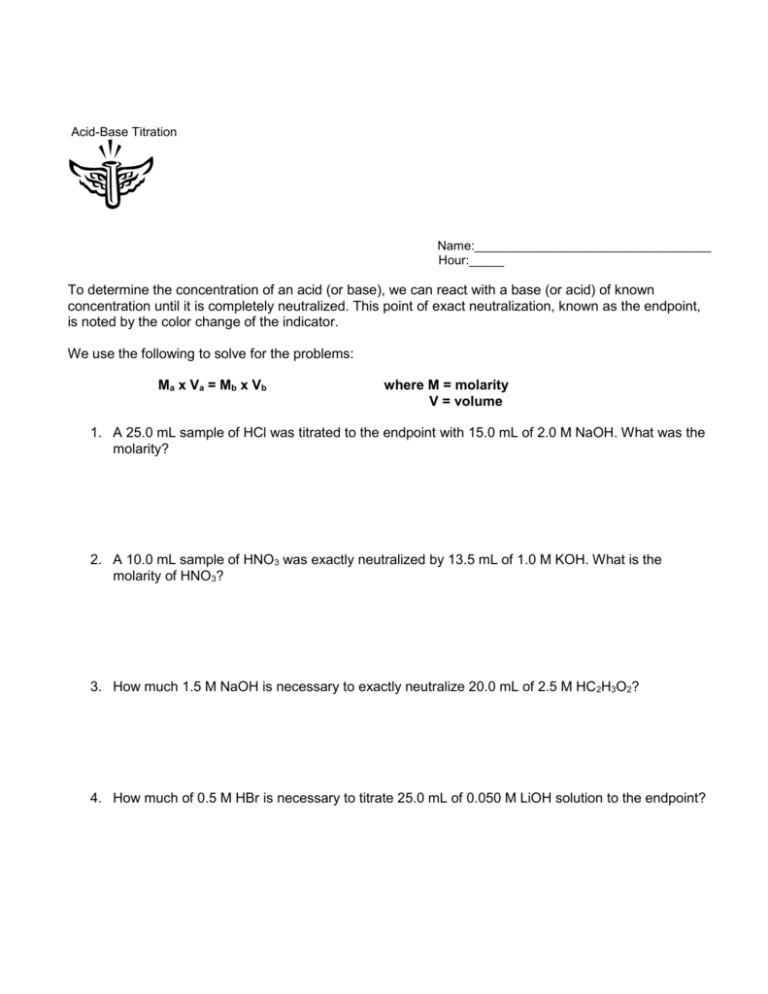
Acid-Base Titration Name:__________________________________ Hour:_____ To determine the concentration of an acid (or base), we can react with a base (or acid) of known concentration until it is completely neutralized. This point of exact neutralization, known as the endpoint, is noted by the color change of the indicator. We use the following to solve for the problems: Ma x Va = Mb x Vb where M = molarity V = volume 1. A 25.0 mL sample of HCl was titrated to the endpoint with 15.0 mL of 2.0 M NaOH. What was the molarity? 2. A 10.0 mL sample of HNO3 was exactly neutralized by 13.5 mL of 1.0 M KOH. What is the molarity of HNO3? 3. How much 1.5 M NaOH is necessary to exactly neutralize 20.0 mL of 2.5 M HC 2H3O2? 4. How much of 0.5 M HBr is necessary to titrate 25.0 mL of 0.050 M LiOH solution to the endpoint? 5) If it takes 54 mL of 0.1 M NaOH to neutralize 125 mL of an HCl solution, what is the concentration of the HCl? 6) If it takes 25 mL of 0.05 M HCl to neutralize 345 mL of NaOH solution, what is the concentration of the NaOH solution? 7) If it takes 50 mL of 0.5 M KOH solution to completely neutralize 125 mL of sulfuric acid solution (H2SO4), what is the concentration of the H2SO4 solution? 8) Can I titrate a solution of unknown concentration with another solution of unknown concentration and still get a meaningful answer? Explain your answer in a few sentences. 9) Explain the difference between an endpoint and equivalence point in a titration. Solutions to the Titrations Practice Worksheet For questions 1 and 2, the units for your final answer should be “M”, or “molar”, because you’re trying to find the molarity of the acid or base solution. To solve these problems, use M1V1 = M2V2. 1) 2) 0.043 M HCl 0.0036 M NaOH For problem 3, you need to divide your final answer by two, because H 2SO4 is a diprotic acid, meaning that there are two acidic hydrogens that need to be neutralized during the titration. As a result, it takes twice as much base to neutralize it, making the concentration of the acid appear twice as large as it really is. 3) 0.1 M H2SO4 4) You cannot do a titration without knowing the molarity of at least one of the substances, because you’d then be solving one equation with two unknowns (the unknowns being M 1 and M2). 5) Endpoint: When you actually stop doing the titration (usually, this is determined by a color change in an indicator or an indication of pH=7.0 on an electronic pH probe) Equivalence point: When the solution is exactly neutralized. It’s important to keep in mind that the equivalence point and the endpoint are not exactly the same because indicators don’t change color at exactly 7.0000 pH and pH probes aren’t infinitely accurate. Generally, you can measure the effectiveness of a titration by the closeness of the endpoint to the equivalence point.


